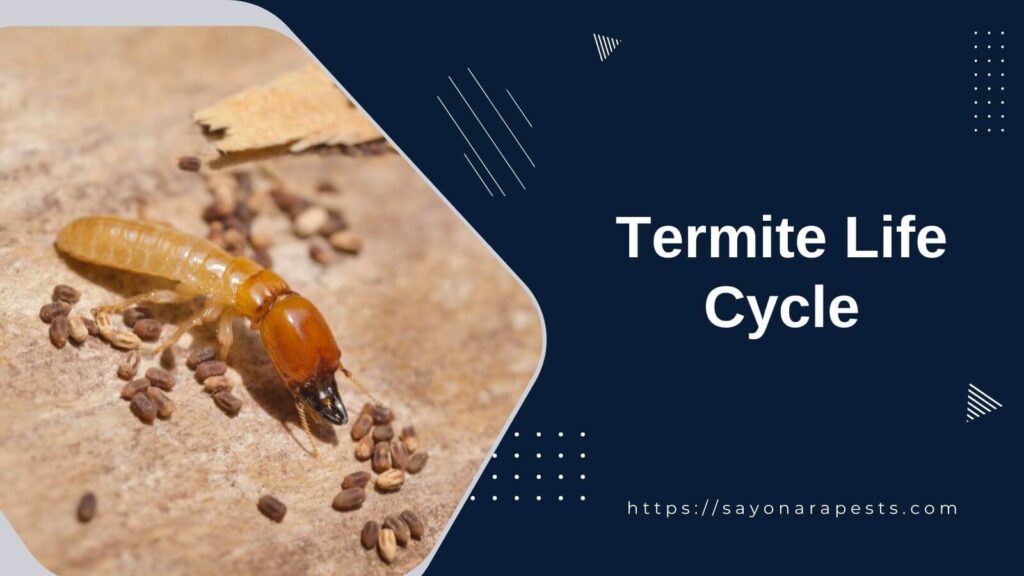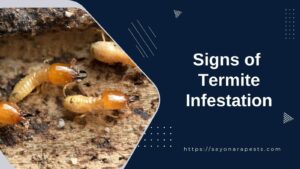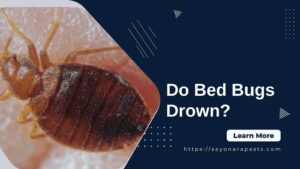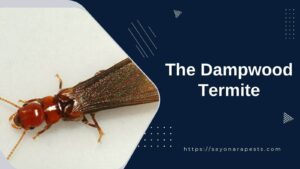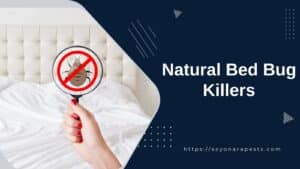The termite life cycle is a fascinating phenomenon that involves a lot of complicated biological processes. It is still a mystery that both researchers and people who get rid of termites find interesting.
Exploring the termite life cycle reveals a world of amazing adaptability and efficient use of resources. This is because of the way metamorphosis and social behavior work together.
By understanding the details of this amazing life cycle, termite control experts gain valuable information that helps them come up with better ways to fight these hard and destructive creatures.
Like their history of evolution, termites’ life cycles are complex and full of different parts. A termite’s life cycle is usually made up of several different stages, each of which is important for the survival of the colony.
It starts with the egg stage, in which the queen termite carefully lays a lot of eggs. These tiny orbs hold the genetic blueprint for the colony’s survival, which could be used by future generations.
The young nymphs, which are small and pale, hatch from these eggs and are eager to start their journey of change.
As the nymphs molt, shedding their exoskeletons and gradually getting darker colors, they move into a fascinating stage where they work or fight. With their hard work and dedication, the workers are the backbone of the colony.
They do hard things like look for food, build and maintain tunnels, and take care of their young. On the other hand, soldiers, who can be recognized by their strong jaws and big bodies, are always on guard to protect the colony from possible threats.
Still, the change from a nymph to an adult is the most important part of the termite’s life cycle. Some people get wings and get ready for their wedding flight during a process called alate or swarmer development, which happens after they reach adulthood.
This amazing event happens most often when it’s warmer outside. It ends when the alates, the caste that reproduces and starts new colonies, come out.
Their journey takes them through the air. They follow natural signs and their own instincts as they try to settle new areas and keep their species alive.
For termite control experts, it is of the utmost importance to understand the details of the termite life cycle.
By understanding the different stages, how long they last, and the conditions under which they happen, experts can come up with targeted ways to stop the reproductive cycle and stop termite populations from growing.
With this information, experts can come up with ways to stop nuptial flights, get rid of reproductive alates, and stop satellite colonies from being set up. This reduces the chance of a devastating infestation.
Also, termite control experts who know a lot about the termite life cycle can change their treatment plans to meet the needs of each stage.
For example, putting pesticides in the right places during the egg or nymph stages can stop development and stop new workers or soldiers from being made.
By timing their actions with the natural progression of the life cycle, experts can make sure that their efforts are as effective as possible and keep termite populations under control for as long as possible.
The termite life cycle, which is a complicated web of growth, adaptation, and survival, is very important for termite control experts who want to stop these hardy insects from doing damage.
By figuring out the secrets of this fascinating journey, experts can learn important things about the best time and way to intervene, protecting homes, buildings, and ecosystems from the sneaky onslaught of termite infestations.
With a thorough understanding of the termite life cycle, a whole new world of possibilities opens up. This makes it possible to try new ways to get rid of termites and protect our built environment.
Egg Stage
The mysterious world of termite eggs tells a fascinating story of how life began. These tiny eggs, which are often hard to see with the naked eye, have a mysterious quality that belies their small size.
Termite eggs are like ethereal pearls in the complex web of termite colonies. They hold both the promise of wealth and the threat of danger.
The queen termite carefully lays these eggs, which will be the future of the colony. Their clear shells protect the new life inside, which has the potential to change into something amazing.
Inside these simple-looking structures is a symphony of complicated processes that make new termite generations possible.
Incubation, the time between laying an egg and its hatching, is a fascinating part of these amazing creatures’ lives. The length of this stage depends on many things, such as the species, the conditions of the environment, and the queen’s health.
This confusing time can last from a few days to a few weeks. It is a time of waiting and being vulnerable.
Termite eggs depend on a lot of different things, each of which plays a different role in determining their fate. Temperature, humidity, and the availability of food all affect how likely it is that an egg will hatch.
The best conditions for embryo development are created when all of these complex parts work together in harmony. Any changes could hurt the eggs’ ability to grow.
In the world of pest control, knowing how to find and identify termite eggs is of the utmost importance. Their detection is a powerful way to figure out how bad an infestation is and how to treat it in a targeted way.
When these mysterious eggs are found early, preventive measures can be taken to stop termite colonies from growing out of control and prevent structural damage.
To get rid of termite eggs, you have to be very careful and committed. By getting rid of these places where bugs grow up, the path of an infestation can be changed in a way that can’t be changed back.
This kind of interference breaks the cycle of life and destroys the base on which termite colonies are built. In this complicated dance between pest and predator, figuring out what termite eggs are and how to treat them is a big step toward keeping people’s homes safe.
In the end, the termite egg stage tells a story of delicate beginnings and deep significance. Inside these harmless-looking shells is the hope for future generations. Different things affect the incubation period, which is a time of vulnerability and anticipation.
The success of these eggs depends on a complex set of environmental factors. When it comes to pest control, it’s important to know how to find and treat termite eggs. This shows the way to protect buildings from the relentless attacks of these hardy creatures.
So, termite eggs are a fascinating miniature of the natural world. Their mysterious lives invite us to learn more about them and admire them.
Nymph Stage
The obscure world of termite nymphs is a topic that both scientists and fans find interesting and mysterious.
With their journeys that change over time and complicated social structures, these tiny creatures offer a fascinating look into the fascinating world of termites.
People often call nymphs “the precursors to adulthood,” and their small bodies show the essence of adapting and growing.
Like the adults, termite nymphs are part of the order Isoptera. This is a taxonomic group that is known for its social behavior and insatiable hunger for cellulose.
When they are young, nymphs come out of their eggs as transparent, delicate beings that look a lot like them when they are adults.
Their pale, colorless bodies make them seem mysterious as if they are on the border between the real and the unreal.
The process of molting is a very important part of a termite nymph’s life. Termite nymphs don’t go through a single metamorphosis like most animals do.
Instead, they molt several times, shedding their exoskeletons to make room for their growing bodies. With each molt, the nymph grows into a more mature version of itself, with stronger jaws and a stronger sense of purpose.
By shedding their old selves over and over again, nymphs are able to grow beyond their limitations and eventually become adults.
In the stages of development of termite nymphs, there is a careful progression that makes sure the colony does well. As nymphs grow up, they take on different roles in their social order.
Some become workers and work nonstop to keep the nest’s infrastructure in good shape and find food. Others change into soldiers and fight fiercely to protect the colony from danger.
This carefully planned division of labor allows the termite society to work well, and each nymph plays an important role in the group’s effort to stay alive.
When dealing with termite infestations, it is very important to know how important it is to treat the nymphs. Even though they are small, these young termites are very strong and can do a lot of damage to wood structures.
By going after the nymphs, pest control measures can stop the colony from reproducing, slowing its growth and reducing the damage that adult termites can do.
Nymph treatment is a good way to protect homes and keep the structure of buildings in good shape because it is careful and well-planned.
Overall, the nymph stage of termites shows us a world that is full of wonder and complexity. Termite nymphs show how tough and flexible you have to be to survive, from how carefully they hatch to how they change as they molt.
To understand the important role nymphs play in termite colonies, you need to know how they grow and change. By treating nymphs first, we can protect our homes from the constant attacks of these small but powerful creatures, ensuring that our built environment will last and be safe.
Soldier and Reproductive Castes
The complex world of termites tells a fascinating story of how different types of termites have evolved to do different jobs within the hierarchical social structure of their colonies.
The soldier class and the reproductive class stand out as good examples of biological diversity and the ability to adapt. The soldier caste is in charge of protecting the termite colony.
They have strong bodies and powerful jaws. These brave warriors have a lot of ways to defend themselves, so they can keep out invaders and protect their friends.
Soldiers are the living defense against predators and other termite colonies. They have hardened exoskeletons and an amazing ability to make poisonous substances.
On the other hand, the reproductive caste, whose members are often called the “kings and queens of the termite realm,” is the best at making babies. These important members of the colony have a unique physical makeup that lets them do their important jobs and keep the colony going.
Reproductives can be recognized by their fancy wings and big bellies, which hold the potential for a new generation of termites to be born. Their main job is to go on mating flights, during which they spread out over a wide area to find good places to start new colonies.
Once the potential queens find their mates and successfully start a new colony, they lose their wings and become royal couple dedicated to the growth and stability of the colony.
Finding these different castes in a termite colony is an interesting task that requires a sharp eye for the small differences that set them apart. Soldiers are easy to spot because they are much bigger than workers.
Their strong bodies and big, strong jaws make it clear that they are protectors. On the other hand, reproductives have unique physical traits that set them apart from other members of the colony.
Their large, often iridescent, and delicate wings are a key part of their mating flights, and their inflated abdomens show that reproduction is an important part of their lives.
Understanding how important it is to treat the soldier caste and the reproductive caste when trying to get rid of termites is key to making management plans that work.
Even though workers make up most of the colony’s population and are mostly in charge of getting resources and keeping the nest in good shape, attacking the soldier and reproductive castes is a unique way to mess with the colony’s stability and ability to reproduce.
By making the soldiers unable to fight, invaders can get past the colony’s defenses and cause its fall and death.
In the same way, eliminating or neutralizing the reproductive caste stops the colony from growing and establishing new territories. This cuts off the colony’s lifeline and ensures long-term control.
The soldier caste and reproductive caste of termites are amazing examples of how clever nature is.
The soldiers’ unwavering commitment to protecting the colony and the reproductives’ role in keeping the termite lineage going are amazing examples of how social insects have specialized.
Recognizing and telling the difference between these castes not only helps us learn more about how termites live but also gives us important information about how to get rid of them.
By treating the soldier and reproductive castes first, we find a way to upset the delicate balance in termite colonies. This gives us a way to protect our homes from these amazing but sometimes destructive creatures.
Swarmers
Swarmer termites are fascinating species that live in complex and amazing colonies. They have some interesting traits that deserve a closer look. Most of the time, you can find these elusive creatures in the termite mound.
They have many different qualities that add to their mysterious appeal. Swarmer termites are an important part of the life cycle of termites. They are called “swarmers” because they like to fly in large groups.
To understand the complexities of these amazing insects, you need to look at their different ways of reproducing, their interesting swarming behavior, and how important it is to treat swarmer termites.
The ability to reproduce is the most important part of a swarmer termite’s life and is the key to keeping their species alive. Inside the termite colony, these winged individuals have the unique ability to reproduce and make sure that their lineage continues.
The amazing ability of swarmer termites to make a lot of eggs, which leads to new generations of termites, shows how well they can reproduce.
Swarmer termites are different from other members of the colony because they can do this amazing things. Their main job is to keep the colony going.
Awe-inspiring swarm behavior is seen in the world of swarmer termites, and it is a sight to see. When the conditions are right, which is usually when it is warm and damp, swarmer termites take off in synchronized flights of epic proportions.
When these beautiful animals take to the air together, they look like a living vortex of flapping wings. The purpose of this big show is to find new territories and good partners, which makes it easier for new colonies to spread out and start-up.
The complex social structure of swarmer termites is shown by how smart and coordinated they are as a group during these swarming events.
When you think about what could happen if termites keep multiplying without being stopped, it’s important to know how important it is to treat swarmer termites.
At first glance, these winged insects may seem harmless, but their presence on a property can be a sign of a deeper problem that needs to be fixed right away. Termite swarmers are a visible sign of a nearby colony since their flights lead to the building of new nests.
If you don’t deal with the infestation right away, it can cause serious damage to the building’s structure, putting the building’s safety at risk and costing you a lot of money.
Because of this, it is important to find and treat swarmer termites as soon as possible to protect the structural integrity of homes and keep them safe places for people to live.
Swarmer termites are fascinating to scientists and homeowners alike because of how they reproduce, how mesmerizing they are when they swarm, and how important it is to treat them.
These winged creatures are important parts of the termite ecosystem and should be studied and thought about carefully.
By figuring out what makes swarmer termites so mysterious, we can better understand how important they are to the termite colony and come up with better ways to control them.
From the fascinating details of how they reproduce to the amazing sight of their synchronized swarming flights, swarmer termites never fail to amaze and keep our full attention.
Termite Queen
The mysterious termite queen is a fascinating creature that rules over the complicated world of termite colonies. She is a great example of how amazing nature is.
The termite queen has a special charm and is the perfect example of strength and fertility. She is the very essence of life’s complicated tapestry. She rules over her loyal subjects with the same majesty as a king or queen, making sure that the termite society runs smoothly.
The thing that makes her different from other termites is that she can reproduce in a way that is truly amazing. The termite queen is often bigger than her workers and has an amazing ability to have babies, which helps the colony grow and stay alive.
She lays the groundwork for the termite community’s survival and growth by having a huge amount of reproductive potential. This means that her genetic legacy will keep the species alive for a long time.
The role that the termite queen plays in the colony cannot be done by anyone else. She is in charge of making a lot of babies, caring for the next generation of termites, and making sure that the colony’s lineage stays the same.
She is also more than just a mother because she is in a position of power and influence in the social hierarchy. Using pheromonal communication, she tells her subjects how to act and how to divide up the work, making sure that everyone is working together for the colony’s success.
Pest control and termite management are all about understanding how important it is to treat the termite queen. Eliminating worker termites might temporarily stop the colony from doing its work, but the queen is what keeps the species alive.
By going after the queen, pest control can strike at the heart of the termite colony and cut off its only source of food. If a colony doesn’t have a fertile queen, it will always go downhill and eventually die out.
Treatment of the termite queen is one of the most important ways to protect human structures and stop the damage that these tiny but powerful pests can do.
By recognizing that the queen is the most important part of the colony and taking specific steps to get rid of or control her, termite infestations can be made less resistant, making it easier to get rid of them.
So, focusing on the queen is a very important part of trying to get rid of termites, as it gives long-term protection against the destructive forces of termites.
In the end, the termite queen, with her amazing ability to reproduce and important role in the termite colony, is a fascinating example of how clever nature is.
Realizing how important it is to treat the termite queen sheds light on the basics of termite control and gives a strategy for reducing the damage that these small but tenacious bugs can do.
Targeted actions that interfere with the queen’s ability to reproduce can make termite infestations less likely to come back. This makes it easier to control termites and protects human habitats.
Factors Affecting the Termite Life Cycle
The complicated and mysterious world of termites shows how many things work together to shape their life cycle. The environment, with its huge variety of things that change all the time, is the background against which these amazing creatures grow and change.
The environment has a big impact on a termite’s life, from changes in temperature to the amount of water in the air. People know that these tiny builders of destruction change how they act based on what’s going on around them.
This gives them a remarkable ability to live and do well in many different places.
The environment and the biological factors that have a big effect on the life cycle of termites are like two threads that can’t be separated. Termite colonies can last for many generations because of how their genes work, how their bodies change, and how they reproduce.
The genetics of these insects determine how resilient and adaptable they are, while their physiology controls how they grow, develop, and, in the end, whether or not they will live. From the tiny details of their genes to the big things that show up in their biology, every part of a termite’s life is intricately woven into their life cycle.
The unpredictable nature of behavior adds another level of complexity to the termite life cycle. Termites have complex social structures, with different castes in the colony having different jobs. The way termites divide up tasks, talk to each other, and find food are all important parts of their behavior that affect the survival and growth of the colony.
Also, external factors like threats from predators or the availability of resources can change the way individual termites act, which can cause their group actions to change in a dynamic way. Researchers are fascinated by how complicated termites’ behavior is, which shows how smart they are even though they seem to live simple life.
For effective termite control strategies, it is very important to understand the many things that affect the termite life cycle.
Scientists and people who work in pest control can learn a lot about the weaknesses and strengths of these common pests by figuring out how the environment, biology, and behavior interact with each other.
With this information, specific steps can be taken to upset the delicate balance of the termite’s life cycle and stop them from doing damage.
From coming up with environmentally friendly ways to treat termites to putting in place preventative measures, a full understanding of the factors at play makes it possible to come up with more sustainable and effective ways to get rid of termites.
In the end, the things that affect the termite life cycle are a complicated and interesting web. The survival and growth of termite colonies are affected by the environment, the complexity of their biology, and the way they act.
Untangling this web of interdependencies is one way to get rid of termites because it lets you come up with plans that take advantage of their weaknesses and lessen their damage.
As we learn more about the mysterious world of termites, we find out not only how they live but also how to protect our buildings and ecosystems from their destructive power.
As the article comes to a close, it’s important to stress how important it is to understand the complicated details of a termite’s life cycle, especially for people who work in the field of termite control.
By navigating the confusing paths of the termite life cycle, these experts can figure out the mysterious reasons why these tiny but powerful creatures keep doing what they do over and over again.
This puts them at the front of the fight to stop and stop termite infestations. The intricate pattern of a termite’s life cycle acts as a compass, giving termite control experts unique insights into the many stages that shape and mold these mysterious insects from the time they are born until they reach adulthood.
This in-depth knowledge of their life cycle gives these experts the ability to come up with and carry out targeted interventions that strike at the heart of termite colonies, upsetting their delicate balance and stopping them from destroying things.
Also, as this in-depth look comes to a close, we should take a moment to think about how well termite control methods work. Over the course of history, people have come up with a lot of different ways to get rid of termites.
By combining scientific advances with a good understanding of how termites behave, they have made a tough way to get rid of termites.
From the use of chemicals that get around the complicated way termites talk to each other to the creation of new physical barriers that slow down their relentless progress, a variety of methods have been developed to protect against the sneaky attacks of these hungry pests.
Still, it’s important to stress that the best way to get rid of termites is not to use just one method. Instead, you should use a holistic and multifaceted approach.
Termite control experts can make a strong barrier against the constant attacks of these bad bugs by using an approach called “integrated pest management,” in which a variety of techniques are carefully coordinated and harmonized.
This combination of strategies combines the best parts of different methods, weaving together the subtleties of monitoring, prevention, and treatment to make an impenetrable fortress that protects homes from the damage done by termites in secret.
At the end of our discussion, it’s important to stress that the search for effective termite control is an ongoing and changing process. As scientific knowledge grows, so will our understanding of how termites live and act.
The principles of termite control must change and adapt along with the ever-changing landscape to make sure that the defenses against these small but sneaky creatures stay strong.
By embracing a never-ending quest for knowledge, fostering a culture of innovation, and promoting cross-disciplinary collaborations, the field of termite control can break out of its box and find new ways to control termites that are both effective and long-lasting.
In conclusion, understanding the termite life cycle is one of the most important tools that termite control experts have. It gives them a unique look into how these strange insects work.
A strong foundation for effective termite control is the combination of different control methods that are based on scientific progress and driven by the never-ending drive to improve.
As we move on to the next part of this story, it is important that we don’t give up on our quest for knowledge and keep trying to figure out the mysterious details of termite biology and behavior.
Only with this kind of unwavering commitment can we hope to protect our homes from the constant attacks of these powerful enemies and win the war against termites.

